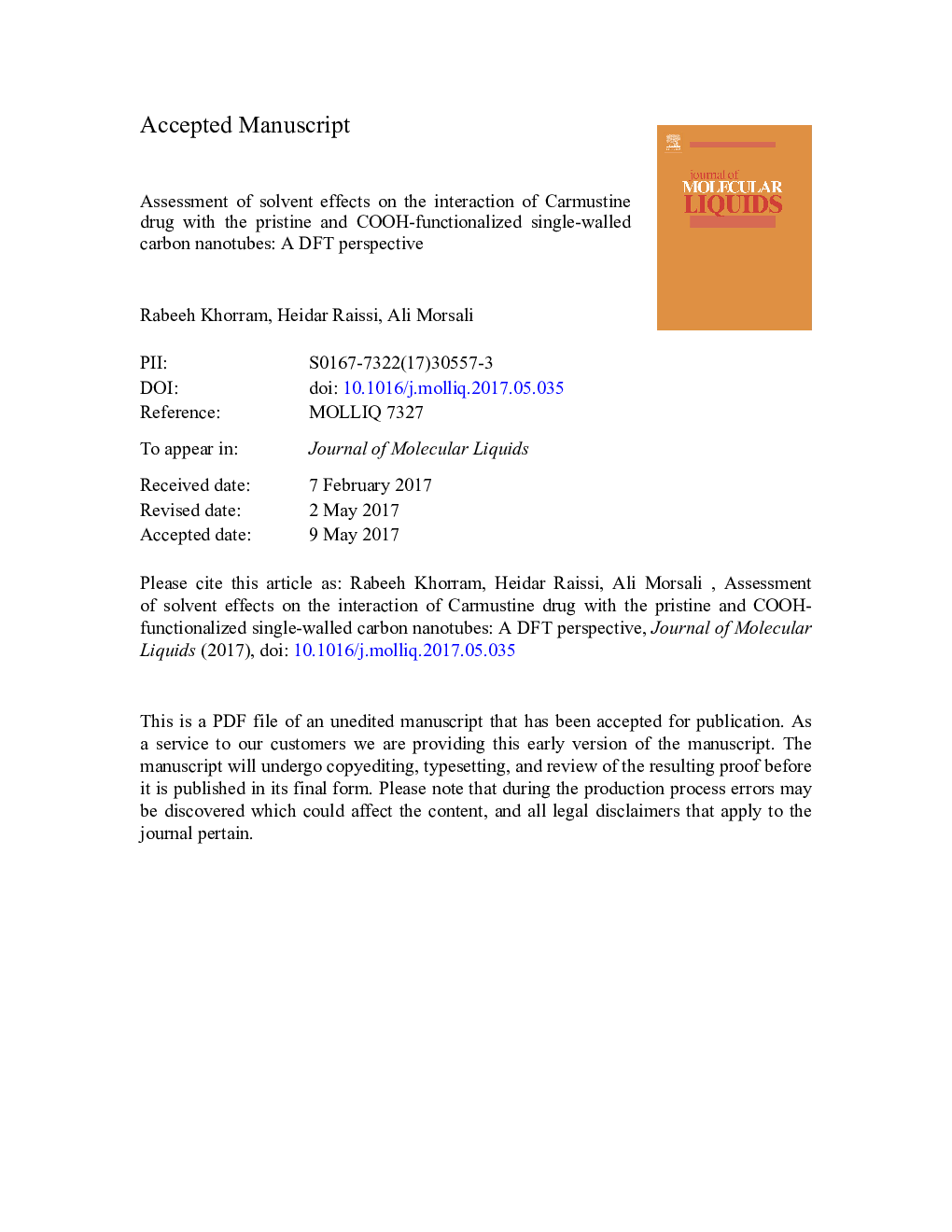| Article ID | Journal | Published Year | Pages | File Type |
|---|---|---|---|---|
| 5408052 | Journal of Molecular Liquids | 2017 | 35 Pages |
Abstract
The adsorption behavior of Carmustine drug on the surface of (5, 5) pristine single-walled carbon nanotube and the functionalized single-walled carbon nanotube with a carboxylic acid group is studied by density functional theory calculation. For both studied nanotubes, the effect of the molecular orientation on the adsorption energies, molecular structure, equilibrium distances and the quantum molecular descriptors are studied. According to the obtained results, the process of the Carmustine adsorption on the external surface of the functionalized nanotube is exothermic and all of the functionalized configurations are stable, while the process of drug adsorption on the external surface of the pristine carbon nanotube is endothermic and the adsorbed structures are unstable. It is found that the intermolecular hydrogen bonds between Carmustine and the functionalized nanotube play the significant role in the stability of the physisorption configurations. Furthermore, the negative stability energy represented by a polarizable continuum model shows the significant increase in the solubility of the nanotubes after drug adsorption on their surfaces in the presence of water solvent. The intermolecular interactions have been explored by calculation of electron densities and their Laplacian at the bond critical point using Atoms-in-Molecule method. The natural bond orbital analysis indicated that the Carmustine molecule can be adsorbed on the nanotube surface with a charge transfer from the nanotubes to drug molecule.
Keywords
Related Topics
Physical Sciences and Engineering
Chemistry
Physical and Theoretical Chemistry
Authors
Rabeeh Khorram, Heidar Raissi, Ali Morsali,
